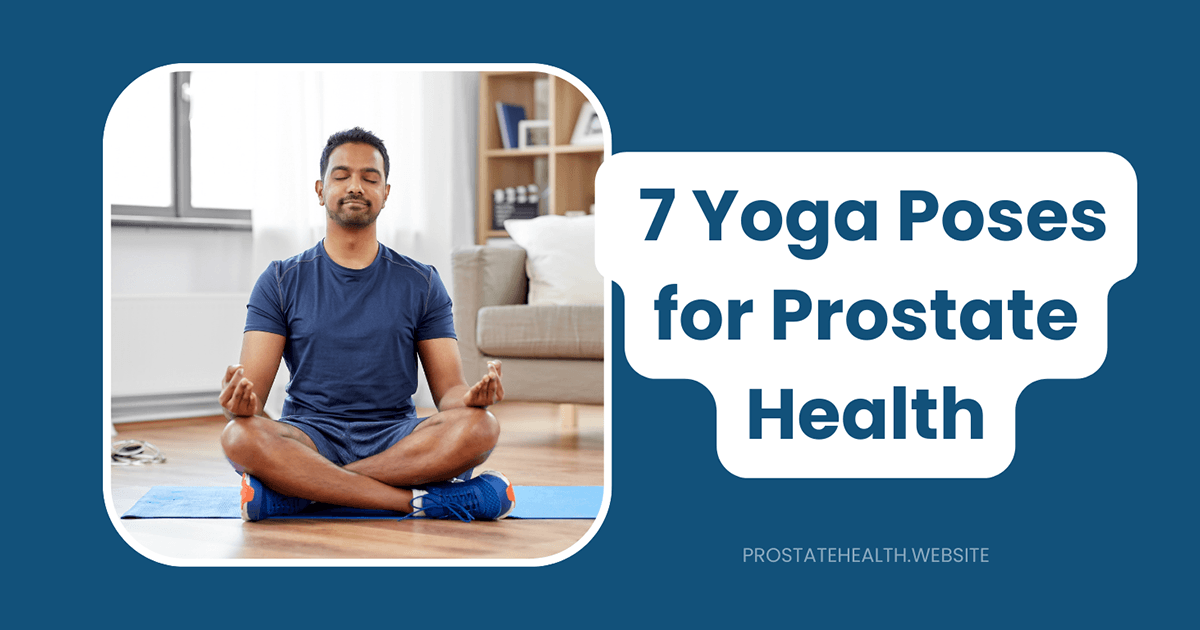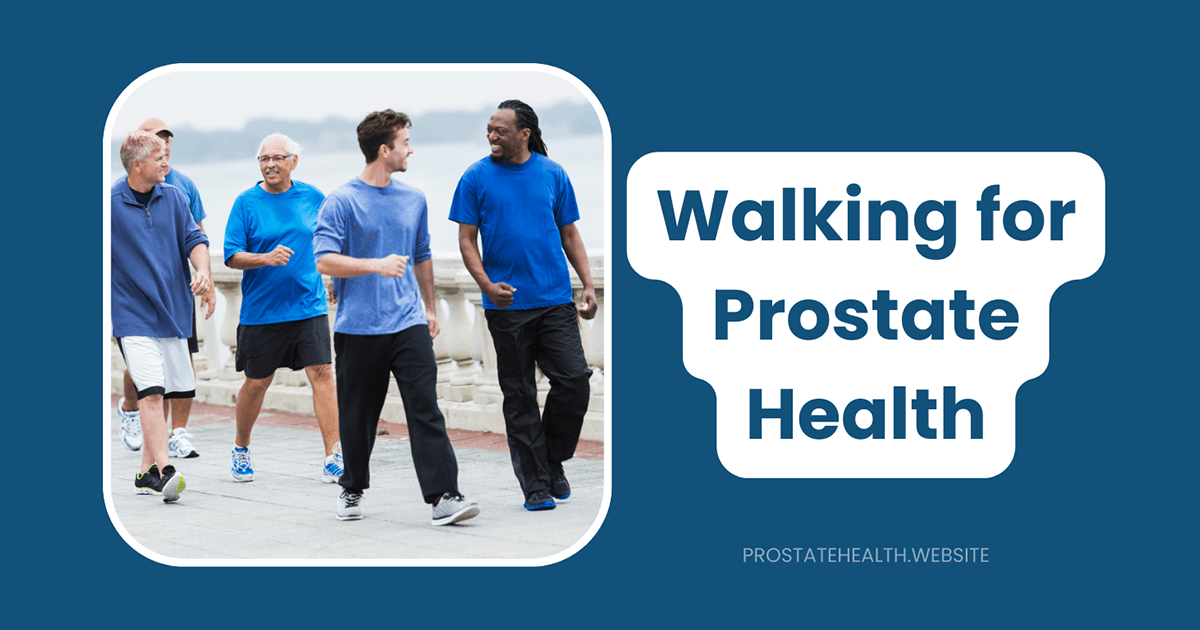Yoga Poses That Support Prostate and Urinary Health

When Michael, a 62-year-old retired teacher, began experiencing urinary frequency and discomfort from an enlarged prostate, his urologist suggested medication. But his daughter, a yoga instructor, recommended he try yoga as a complementary approach.
“I was skeptical at first,” Michael admits. “I’d never done yoga and didn’t think of it as something for prostate problems. But after three months of regular practice, I noticed significant improvements in my symptoms and overall well-being.”
Michael’s experience reflects a growing body of research suggesting that specific yoga poses can benefit prostate and urinary health. For the millions of men dealing with conditions like benign prostatic hyperplasia (BPH), prostatitis, or recovering from prostate surgery, yoga offers a gentle yet effective approach to managing symptoms and improving quality of life.
This comprehensive guide explores the science behind yoga for prostate health and provides detailed instructions for poses that specifically target the pelvic region, helping to alleviate urinary symptoms and support overall prostate function.
The Science: How Yoga Benefits Prostate and Urinary Health
Before diving into specific poses, let’s understand why yoga can be beneficial for prostate and urinary health:
Strengthens Pelvic Floor Muscles
The pelvic floor muscles support the bladder and bowel and play a crucial role in urinary control. A 2013 study found that men who performed pelvic floor exercises daily for 12 weeks after prostate surgery experienced improved urinary function and reduced lower urinary tract symptoms.
Yoga poses that engage the pelvic floor can help:
- Improve bladder control
- Reduce urinary frequency and urgency
- Support recovery after prostate surgery
- Potentially improve sexual function
Reduces Inflammation and Improves Circulation
Many yoga poses gently compress and release the pelvic organs, which can:
- Enhance blood flow to the prostate gland
- Reduce inflammation in the pelvic region
- Promote lymphatic drainage
- Support overall prostate health
Decreases Stress and Tension
Chronic stress can exacerbate urinary symptoms and pelvic discomfort. The mindful breathing and relaxation aspects of yoga help:
- Lower stress hormones like cortisol
- Reduce sympathetic nervous system activity (fight-or-flight response)
- Decrease tension in the pelvic muscles
- Promote overall relaxation
Research-Backed Benefits
Recent studies support yoga’s benefits for prostate and urinary health:
- A 2025 study presented at the American Urological Association Annual Meeting highlighted the benefits of pelvic yoga for patients with overactive bladder.
- Research published in Prostate Cancer and Prostate Diseases found that an organized yoga program of two sessions per week during radiotherapy significantly reduced fatigue and improved sexual and urinary dysfunction in prostate cancer patients.
- A study involving 29 males with localized prostate cancer found that yoga elevated immune function and reduced inflammation markers.
Dr. Sarah Johnson, urologist at Memorial Urology Center, notes: “While yoga shouldn’t replace medical treatment for prostate conditions, it can be a valuable complementary approach. I’ve seen patients experience meaningful improvements in urinary symptoms and quality of life when they incorporate specific yoga poses into their routine.”
Key Yoga Poses for Prostate and Urinary Health
The following poses specifically target the pelvic region and have been shown to benefit prostate and urinary health. Practice these poses regularly for optimal results.
1. Baddha Konasana (Bound Angle Pose or Butterfly Pose)
Benefits for prostate health:
- Opens the pelvic floor
- Releases tension in the groin and inner thighs
- Improves circulation to the pelvic organs
- Stimulates the prostate gland
How to perform:
- Sit on your mat with legs extended in front of you
- Bend your knees and bring the soles of your feet together
- Draw your heels as close to your groin as is comfortable
- Allow your knees to drop toward the floor (use cushions under the knees for support if needed)
- Hold your feet with your hands or place hands on your ankles
- Sit tall, lengthening through your spine
- Breathe deeply and hold for 1-5 minutes
- To deepen the pose, gently lean forward from the hips while maintaining a straight back
Modification for beginners: Sit on a folded blanket to elevate the hips and place cushions under the knees for support.
Caution: If you have knee or groin injuries, practice this pose with caution or consult a yoga instructor for modifications.
2. Virasana (Hero Pose)
Benefits for prostate health:
- Releases tension around the prostate gland
- Reduces symptoms of bladder heaviness
- Improves circulation to the pelvic region
- Can be used to practice pelvic floor exercises (Kegels)
How to perform:
- Kneel on your mat with knees together and feet slightly wider than hip-width apart
- Lower your buttocks to sit between your feet (not on your feet)
- Place your hands on your thighs, palms down
- Sit tall with your spine straight and shoulders relaxed
- Keep your weight balanced between your sitting bones, not on your knees
- Breathe deeply and hold for 1-5 minutes
- To release, use your hands for support and roll to one side before extending your legs
Modification for beginners: Place a cushion or folded blanket between your feet to sit on, reducing the intensity of the stretch.
Caution: If you have knee problems or recent knee surgery, practice this pose with caution or skip it entirely.
3. Dhanurasana (Bow Pose)
Benefits for prostate health:
- Strengthens the pelvic floor muscles
- Massages the abdominal organs, including the prostate
- Improves circulation to the pelvic region
- Helps relieve stress and anxiety
How to perform:
- Lie on your stomach with arms alongside your body
- Bend your knees, bringing your heels toward your buttocks
- Reach back and grasp your ankles with your hands
- On an inhalation, lift your chest and thighs off the floor
- Look forward, keeping your neck in a neutral position
- Hold for 15-30 seconds while breathing normally
- Release and rest, then repeat 2-3 times
Modification for beginners: If you can’t reach your ankles, use a yoga strap looped around your feet.
Caution: Avoid this pose if you have high blood pressure, hernia, or recent abdominal surgery.
4. Janusirsasana (Head-to-Knee Pose)
Benefits for prostate health:
- Stretches the pelvic floor
- May improve blood flow to the prostate
- Reduces tension in the lower back and groin
- Calms the nervous system
How to perform:
- Sit with legs extended in front of you
- Bend your right knee and place the sole of your right foot against your left inner thigh
- Turn your torso slightly toward the extended leg
- Inhale and lengthen your spine
- Exhale and hinge at the hips to fold forward over the extended leg
- Reach for your foot, ankle, or shin (wherever is comfortable)
- Hold for 30 seconds to 1 minute, breathing deeply
- Return to upright and repeat on the other side
Modification for beginners: Use a strap around the foot of the extended leg if you can’t reach it comfortably.
Caution: If you have sciatica or a hamstring injury, practice with caution and avoid folding too deeply.
5. Supta Padangusthasana (Reclining Big Toe Pose)
Benefits for prostate health:
- Strengthens the pelvic floor
- Releases tension in the hips and groin
- Improves circulation to the pelvic region
- Can be practiced safely by those with limited mobility
How to perform:
- Lie on your back with legs extended
- Bend your right knee toward your chest
- Loop a strap around the ball of your right foot (or hold your toe if flexible enough)
- Straighten your right leg toward the ceiling
- Keep your left leg pressed firmly into the floor
- Hold for 30 seconds to 1 minute, breathing deeply
- Lower the right leg and repeat with the left leg
Modification for beginners: Keep a slight bend in the raised leg if straightening causes discomfort.
Caution: If you have hamstring injuries, practice gently and avoid straightening the leg completely.
6. Salamba Sarvangasana (Supported Shoulder Stand)
Benefits for prostate health:
- Stimulates the prostate gland through gentle inversion
- Improves circulation to the pelvic organs
- Strengthens the pelvic floor
- Calms the nervous system
How to perform:
- Lie on your back with arms alongside your body
- Bend your knees and bring them toward your chest
- Press your arms into the floor and lift your hips
- Support your lower back with your hands
- Straighten your legs toward the ceiling
- Keep your neck neutral and shoulders relaxed
- Hold for 30 seconds to 2 minutes (gradually building up time with practice)
- To release, bend your knees toward your forehead and slowly roll down
Modification for beginners: Practice with legs bent or try the half shoulder stand with legs at a 45-degree angle.
Caution: This is an advanced pose. Skip it if you have neck issues, high blood pressure, glaucoma, or are in the acute phase of prostatitis. Always practice with proper support and ideally under the guidance of a qualified instructor.
7. Malasana (Garland Pose or Yoga Squat)
Benefits for prostate health:
- Opens the pelvic floor
- Improves circulation to the pelvic region
- Strengthens the lower body
- Aids in healthy elimination
How to perform:
- Stand with feet slightly wider than hip-width apart, toes turned out slightly
- Lower into a deep squat, keeping heels on the floor if possible
- Bring your palms together in front of your chest in prayer position
- Use your elbows to gently press your knees outward
- Lengthen your spine and open your chest
- Hold for 30 seconds to 1 minute, breathing deeply
Modification for beginners: Place a folded blanket under your heels if they don’t reach the floor, or hold onto a stable object for balance.
Caution: If you have knee issues, practice with caution or skip this pose.
Creating a Prostate-Friendly Yoga Routine
For optimal benefits, incorporate these poses into a regular practice. Here’s a sample 20-30 minute routine specifically designed for prostate and urinary health:
Warm-Up (5 minutes)
- Gentle seated twists
- Cat-Cow pose (alternating between arching and rounding the back)
- Pelvic tilts (lying on back, alternating between pressing lower back to floor and creating space under lower back)
Main Sequence (15-20 minutes)
- Baddha Konasana (Bound Angle Pose) – 2 minutes
- Virasana (Hero Pose) – 2 minutes
- Janusirsasana (Head-to-Knee Pose) – 1 minute each side
- Malasana (Garland Pose) – 1 minute
- Supta Padangusthasana (Reclining Big Toe Pose) – 1 minute each side
- Dhanurasana (Bow Pose) – 3 repetitions, holding for 15-30 seconds each
- Salamba Sarvangasana (Supported Shoulder Stand) – 1-2 minutes (optional, for experienced practitioners)
Cool Down (5 minutes)
- Knees-to-chest pose
- Gentle supine twist
- Savasana (Corpse Pose) – 3-5 minutes of complete relaxation
Practice Tips:
- Frequency: Aim for 3-5 sessions per week
- Timing: Morning practice can help set a positive tone for the day, while evening practice may help with sleep
- Breath: Focus on deep, diaphragmatic breathing throughout your practice
- Consistency: Regular practice yields better results than occasional intense sessions
- Mindfulness: Pay attention to sensations in your pelvic region without judgment
Integrating Pelvic Floor Awareness
For enhanced benefits, incorporate pelvic floor engagement (similar to Kegel exercises) during your yoga practice:
- Identify the pelvic floor muscles: These are the muscles you use to stop urination midstream
- Practice engaging and releasing: While in poses like Virasana or Baddha Konasana, gently contract these muscles for 3-5 seconds, then release
- Coordinate with breath: Try inhaling as you release, exhaling as you engage
- Build endurance: Gradually increase the duration of contractions to 10 seconds
- Practice regularly: Aim for 3 sets of 10 contractions daily
Dr. Michael Chen, physical therapist specializing in pelvic health, explains: “Combining yoga poses with conscious pelvic floor engagement creates a powerful synergy. The poses help release tension and improve circulation, while the pelvic floor exercises build strength and control.”
Safety Considerations and Precautions
While yoga can be beneficial for prostate health, safety should always be a priority:
When to Exercise Caution:
- Acute prostatitis: During active infection, gentle stretching may be appropriate, but avoid intense poses
- Recent prostate surgery: Wait for your surgeon’s clearance before beginning yoga
- Severe BPH symptoms: Start with the gentlest poses and progress gradually
- Existing injuries: Particularly to the knees, hips, or lower back
General Safety Tips:
- Start slowly: Begin with shorter holds and fewer repetitions
- Use props: Blankets, blocks, and straps can make poses more accessible
- Listen to your body: Never push through pain
- Breathe naturally: Avoid holding your breath during poses
- Stay hydrated: Proper hydration supports both yoga practice and prostate health
- Consult professionals: Speak with your healthcare provider before beginning, and consider working with a qualified yoga instructor
Real Success Stories: Men’s Experiences with Yoga for Prostate Health
James, 68, diagnosed with BPH: “After six months of practicing these yoga poses three times weekly, my nocturia (nighttime urination) decreased from 4-5 times per night to just once or twice. My quality of life has improved dramatically.”
Robert, 59, recovering from prostatectomy: “My urologist recommended pelvic floor exercises after surgery, but I found them difficult to do consistently on their own. Incorporating them into a yoga routine made them more engaging and effective. My continence improved much faster than expected.”
David, 55, with chronic prostatitis: “The combination of yoga poses and breathing techniques has been transformative for managing my pelvic pain. I notice flare-ups are less frequent and less severe when I maintain my practice.”
Conclusion: A Holistic Approach to Prostate Health
Yoga offers a valuable complementary approach to supporting prostate and urinary health. The poses described in this guide specifically target the pelvic region, helping to improve circulation, reduce tension, strengthen supportive muscles, and potentially alleviate symptoms associated with various prostate conditions.
Remember that yoga works best as part of a comprehensive approach to prostate health that includes:
- Appropriate medical care and regular check-ups
- A prostate-healthy diet
- Adequate hydration
- Regular physical activity
- Stress management
As Michael, whom we met at the beginning of this article, discovered: “Yoga hasn’t replaced my medical treatment, but it’s become an essential part of managing my prostate health. Beyond the physical benefits, it’s given me a sense of control and well-being during a challenging time.”
Whether you’re dealing with an existing prostate condition or simply want to support your prostate health proactively, these yoga poses offer a gentle, effective approach that can be adapted to any fitness level or age.
Have you tried yoga for prostate or urinary health? What has your experience been? Share your thoughts in the comments below.






